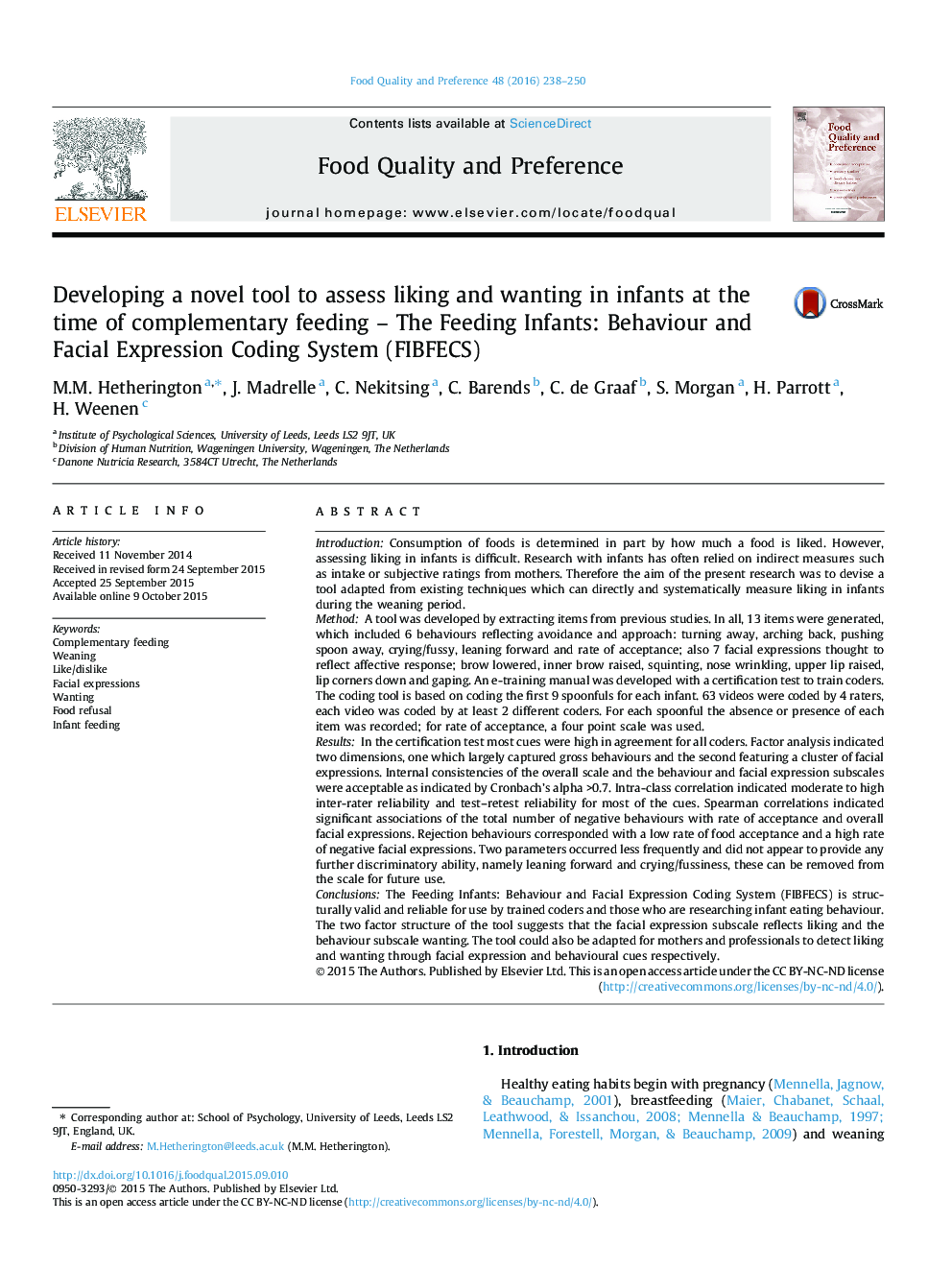| کد مقاله | کد نشریه | سال انتشار | مقاله انگلیسی | نسخه تمام متن |
|---|---|---|---|---|
| 6261217 | 1290566 | 2016 | 13 صفحه PDF | دانلود رایگان |

- A video coding tool was developed to measure liking/wanting in infants at weaning.
- Facial expressions reflected liking and selective behaviours indicated wanting.
- The tool includes specific e-training materials and certification test.
- Good internal consistency, reliability and structural validity have been shown.
- FIBFECS is a useful tool for researchers to understand infants' mealtime behaviours.
IntroductionConsumption of foods is determined in part by how much a food is liked. However, assessing liking in infants is difficult. Research with infants has often relied on indirect measures such as intake or subjective ratings from mothers. Therefore the aim of the present research was to devise a tool adapted from existing techniques which can directly and systematically measure liking in infants during the weaning period.MethodA tool was developed by extracting items from previous studies. In all, 13 items were generated, which included 6 behaviours reflecting avoidance and approach: turning away, arching back, pushing spoon away, crying/fussy, leaning forward and rate of acceptance; also 7 facial expressions thought to reflect affective response; brow lowered, inner brow raised, squinting, nose wrinkling, upper lip raised, lip corners down and gaping. An e-training manual was developed with a certification test to train coders. The coding tool is based on coding the first 9 spoonfuls for each infant. 63 videos were coded by 4 raters, each video was coded by at least 2 different coders. For each spoonful the absence or presence of each item was recorded; for rate of acceptance, a four point scale was used.ResultsIn the certification test most cues were high in agreement for all coders. Factor analysis indicated two dimensions, one which largely captured gross behaviours and the second featuring a cluster of facial expressions. Internal consistencies of the overall scale and the behaviour and facial expression subscales were acceptable as indicated by Cronbach's alpha >0.7. Intra-class correlation indicated moderate to high inter-rater reliability and test-retest reliability for most of the cues. Spearman correlations indicated significant associations of the total number of negative behaviours with rate of acceptance and overall facial expressions. Rejection behaviours corresponded with a low rate of food acceptance and a high rate of negative facial expressions. Two parameters occurred less frequently and did not appear to provide any further discriminatory ability, namely leaning forward and crying/fussiness, these can be removed from the scale for future use.ConclusionsThe Feeding Infants: Behaviour and Facial Expression Coding System (FIBFECS) is structurally valid and reliable for use by trained coders and those who are researching infant eating behaviour. The two factor structure of the tool suggests that the facial expression subscale reflects liking and the behaviour subscale wanting. The tool could also be adapted for mothers and professionals to detect liking and wanting through facial expression and behavioural cues respectively.
Journal: Food Quality and Preference - Volume 48, Part A, March 2016, Pages 238-250